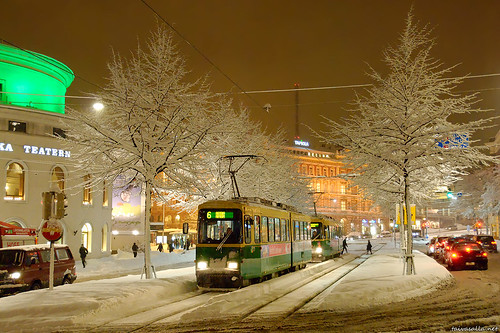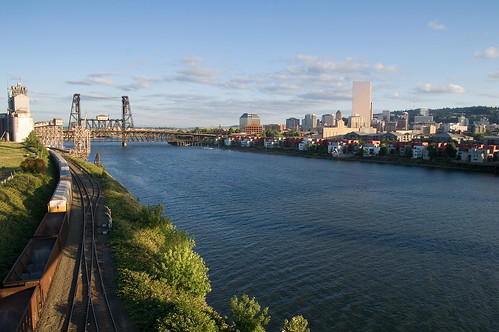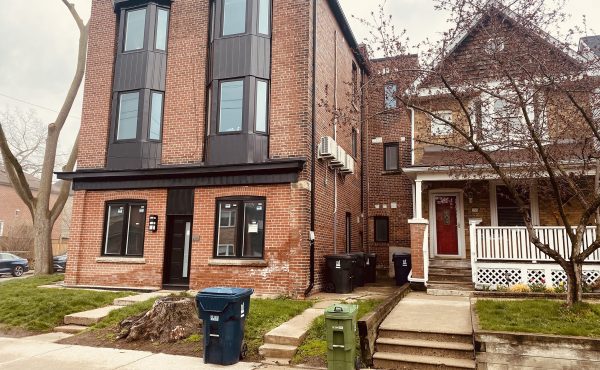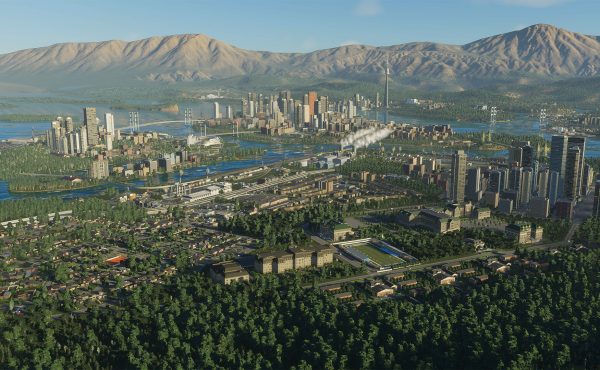
This morning, the Transforming and Revitalizing Downtown Summit kicked off at the Renaissance hotel in the Rogers Centre, a conference featuring many planners and architects hoping to improve their toolkits as they tackle declining urban centres and look to contain and centralize urban sprawl.
Of the many speakers that presented this morning, three were particularly interesting:
1. Annukka Lindroos, the Deputy Director for the City Planning Department of Helsinki, Finland spoke about the public quality of Helsinki, making it an extremely unique and fascinating example of how municipal governments can play a huge role in city planning.

– The Greater Helsinki Region has about 1 million inhabitants and comprises 3 other major cities besides Helsinki, including Vantaa, Espoo and Kaunianen.
– It was the fastest growing city in Europe before the financial crisis
– 70% of transportation is on public transit
– Approx. 70% of land is owned by the City
– 85% of homes are 5-6 story apartment buildings
– 1% of the cost of constructing apartment buildings must go to integrating public art into the structure
– Half the population of Helsinki rents while the other half owns property
– The 200km shoreline is entirely public
– The city has 270 planners, which is apparently an astounding number for a city of Helsinki’s size (I wonder how many Toronto has?)
2. Peter Englander, the Director of the Portland Development Commission shared his experiences of the successes of a more privatized and development-led planning process in Portland:

– Downtown Portland is comprised of small blocks (200ft x 200ft or 61m x 61m), which were originally created in order to maximize real estate opportunities
– Public parks are run by non-profit organizations
– Barely any land is owned by the city (less than 1%) Only 1% of land owned by the City is available for private redevelopment (this excludes rights of way and city-owned buildings)
– The planning process generally works by land being sold to private developers with stringent guidelines as to density requirements, land use, etc. e.g. the new River District
– Have been able to create affordable housing in historical districts through private/public development collaboration
– Used to have freeways on both side of the river, both have been torn down
3. Brent Toderian, the Director of Planning for the City of Vancouver followed the Portland presentation. Vancouver, it seems, occupies the middle ground between the extremely public Helsinki and the more privatized Portland:

– Very robust design review process that forces towers to be stepped back after several stories, building edges must be walking-friendly, front doors must face the street, no stoops as well as municipal graffiti programs to prevent blank walls
– All amenities (parks, fountains, etc.) are semi-public, even when built by private developers
– In new buildings, 25% of residents must be for families
– Only city in Canada to open a new major public school in the downtown in the last decade, with another on the way
– Single story building proposals are no longer accepted for the urban centre
– Transportation prioritizes first pedestrians, second biking, third transit with single occupancy cars last.
– 50% of all trips in the downtown city are done by foot, with walking as the fastest growing mode of transportation
My guess is Toronto would sit somewhere between Vancouver and Portland on the private/public spectrum, but this may be changing with the Build Toronto and other ongoing City Hall initiatives taking place. I’d be interested to see how much land is currently owned by the City, as well as how many planners it has and how it’s design review process compares to these cities.
Photos by athinaf, taivasalla, Stu Steeger and Antony Pranata in that order.




5 comments
Am surprised that “less than 1%” of land in downtown Portland is city-owned. Does this statistic include sidewalks?
Vancouver, faces a similar issue as Toronto. High commercial taxes have relegated the city into a bedroom community with unavoidable fiscal consequences.
http://www.udi.bc.ca/Publications/UDI/UDI_Pres_WestSideGVREB_March012007.pdf
Property Tax Imbalance
• Impact of converting 1-storey commercial
building to Residential Tower
• Business
Deemed Services Consumed: $71,695
Taxes Paid: $152,350
Excess Taxation: $80,655
• Residential
Municipal Services Consumed: $234,670
Taxes Paid: $129,750
Shortfall: $104,920
270 planners? That’s amazing.
The 1% guess represented property owned by the City that was available for private redevelopment. It did not included rights of way or city-owned buildings.
Thanks for clarifying Peter. How does this 1% guess figure compare to other cities in North America? And do parks count as municipal property in Portland or do the non-profit organizations hold the land rights as well?